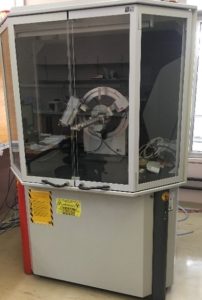Identification of Aluminium Composite Panels
CSIRO is aware that many jurisdictions are implementing audit programs to identify buildings clad with Aluminium Composite Panels (ACP) that may pose an unacceptable level of fire safety risk to occupants.
Due to the significant number of buildings nationwide to be tested, and the time constraints inherent in the current situation, CSIRO has developed a rapid materials identification method for ACP. While not intended as an alternative to the standard fire test for this application (AS 1530.1) referenced in the NCC, this method provides an initial analysis and additional information on the characteristics of particular ACP materials.
Grenfell Tower block in London following the devastating 2017 fire that spread along the outside of the building
This approach has multiple benefits: it facilitates a fast result; requires only a very small material sample; categorises each sample into groups; minimises disruption of installed building façade materials; and is more cost effective.
The method developed by CSIRO is a high throughput analytical technique which grades ACP core materials into categories based on its polyethylene content:
- 100 – 70% polyethylene core
- 29-8% polyethylene core
- <7% polyethylene core
These categories align with the Insurance Council of Australia (ICA) risk protocol. CSIRO is recommended by the Insurance Council of Australian for providing accurate classification of ACP material. The laboratory has recently completed an inter-laboratory round-robin series and is applying for NATA accreditation for the applied test method(s).
A range of methods can applied depending on the material type, fire retardant content etc. The analytical methods used to grade the ACP core materials and identify insulation and materials are:
XRD Spectrometer
- Fourier-transform infrared spectroscopy (FTIR) – a technique used to obtain an infrared spectrum of a material. It is used for the identification of polymers and many inorganic compounds.
- Ash content (ASTM D5630-13) – an analytical technique used to identify the proportion of inorganic material in polymers. CISOR is NATA accredited for this method.
- X-ray diffraction (XRD) – an analytical technique used to identify crystalline materials, such as those which may be present due to mineral fillers present in ACP core materials.
- Thermogravimetric analysis (TGA) – a method of thermal analysis in which the weight change of a material is measured with increasing temperature. This information is used to determine the fraction of polymer and non-volatile portion of inorganic fillers in the ACP core material. Where suitable, a simpler ash content test can be used in place of TGA.
Further information
CSIRO Infrastructure Technologies also provides a range of other evaluation services related Building facades.
Contact
If you would like to contact us about testing of ACP building products, please call 1300363 400 or email us at firesafety@csiro.au


